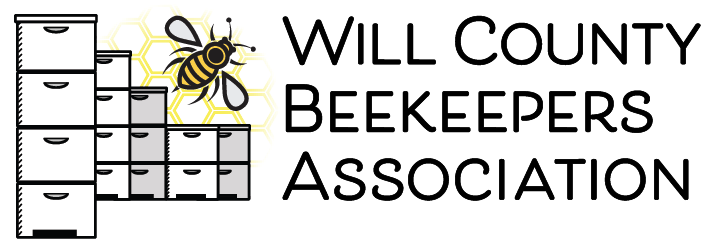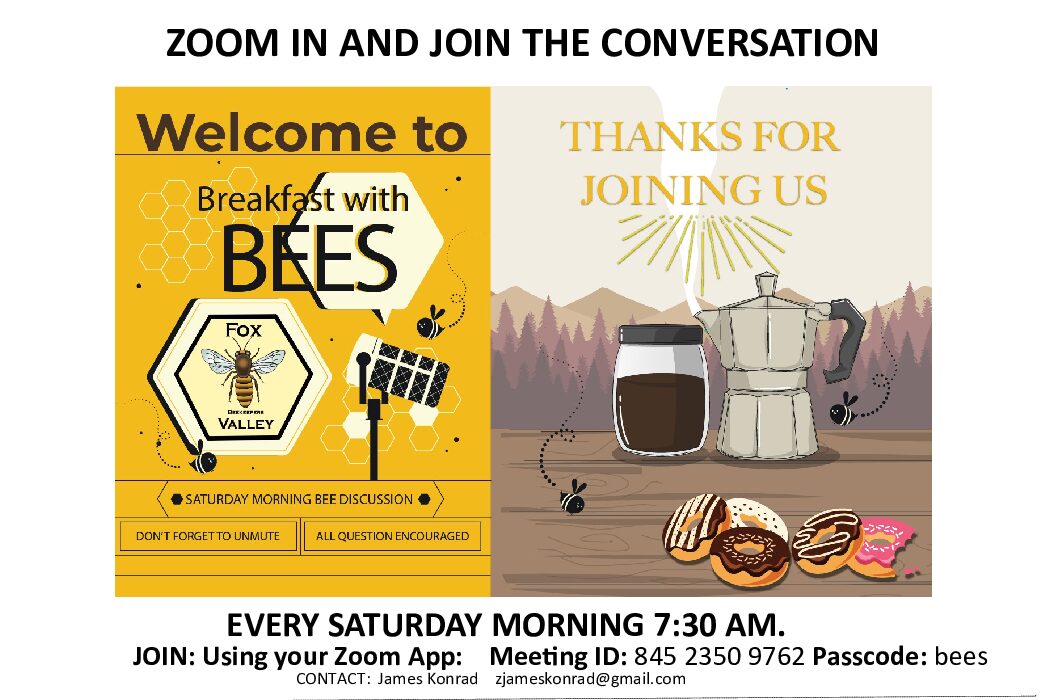This is my son Jake and our dog. Jake recently accompanied me in my bee mobile, better known as a dodge caravan, or thefamily hauler, or even the swagger wagon if you are Austin Powers. It has brought my family to multiple grocery stores, college visits and family fun road trips. It has even helped uswith moving our kids out into college dorms. An exciting, but sad day for us, now empty nesters.
Between all those family activities, it has been my wife’s car that will be forever ingrained with her touches, like the slightly torn seat edging from her “bedazzled jeans studs” or the plethora of air freshener pouches scattered throughout cabin to combat the sweaty and gross smells of children from sporting events … and lets not forget the radio station presets that I have no idea of how to change, but that’s okay, I have no gripe about having a variety of radio stations as long as there isn’t one set on smooth jazz. Who listens to that stuff? And now, the last leg of the van will serve as my Bee Mobile in which I’m already starting to add my own touches, such as the sweet smell of honey fames and sticky propolis on the doorhandles. I ask you, can you all relate?
A couple weeks ago my son came in for the weekend. It’s a rare occurrence, and even rarer when his weekend isn’t filled with catching up with his friends from the neighborhood. With thet emps in the 60’s, I wanted to break into the hives for the first big inspection of the year and also to prep them for the upcoming season, which included adding queen excluders, supers and culling out old frames, which we will talk about tonight. I asked Jake if he could give his old man a helping hand and I was delightfully surprised when he said yes. We loaded the Bee Mobile with enough supers to give 2 to each of the hive … about 20 or so, along with the variety of beekeeping tools.
We made 1 stop on our way out, a pine tree at the Target parking lot for needles to feed the smokers. How long will it take he asked? I said only a couple hours. I was way too optimistinc. 5 hours, 12 hives , 3 locations, and 2 strawberry shakes later, we were finally done. The remaining hives at my last apiary will just have to be tackled another day since the day was getting long and I was just plain too tired.
I heard a quote from a recent movie that I love, “No great idea ever happened without a dream.” Was beekeeping a dream for me, or is it even a great idea? How about for all of you? For me, I would say yes to some degree, but to have a small business was more of the dream … perhaps to sell a few bottles of honey, or even someday open up a honey shop like one of our members did in Lisle. Just like his willingness on that Saturday to help me in the hives, Jake volunteered at home with taking this beekeeping business idea on by building me an online store. He apparently did it right. Searching for honey in my area within google putsme near the top of the listings. Our little bee business was born. Thanks Jake, once again.
It was really nice to have him join me on that 60 degree day. Hesaved me hours of time, and strain on my back, but it was so much more than that. For a change, I had more of a companion other than my trusty Bee Mobile and those wifey preset stations. Instead of the airways being filled with DJ banter and overplayed tunes, it was filled with whatever conversation came to mind between us … along with the low rumble of the Bee Mobile’s failing exhaust system. Yes, we added a few more found memories to the old van, as well as few more clicks to the odometer, thanks Jake and beekeeping.
March – the lucky month
The “luck of the Irish” sings proud in the month of March. Bagpipes, Irish dancers, and St Patrick. Did you know that on of St Patrick’s miracles was turning water into honey, how cool is that? Being my name is Patrick, have blue eyes, and was born just a half hour before St Patrick’s day, you may think I have that lucky Irish blood.
NOPE. I don’t have a lick of leprechaun in my blood, and thank goodness because I find this guy to be pretty creepy… my mom just liked the name Patrick and my parents claimed they weren’t counting 9 months out to St Patrick’s day when they were under the covers being frisky.
So, when it comes to coming out of winter with my bees, I can’t rely on Irish luck. I checked my hives in February and gave them what they needed before everything started to turn shamrock green. The warm weather provided a good indicator that of most my hives were in good standing just from looking outside of them.
As you can see here, they were busy… the warm weather encouraged the willows to bud out and the bees fly encouraging them to bring in pollen as a source of protein to feed the larva. How exciting. The bee season has begun, even if it was in late February when I filmed this. Perhaps you saw the same thing at your hives.
So, what is luck?
Is it your bees making it through the winter? Perhaps.
Is luck getting another year out of your 3 year old queen? Perhaps.
Is luck capturing your own swarm? Perhaps.
Is luck not losing your hive tool? Perhaps.
Is luck having a bountiful harvest? Perhaps.
Or is luck just a made-up word … and that we control the fate of our honeybee’s journey. Quite honestly, I think it’s both. Silly stuff like not losing my hive tool isn’t lucky, its being mindful where I put the darn thing. Getting 3 years out of a queen … well with all the talk if of queens lasting 1-2 years, I guess this could be in the lucky category, or just good genetics. I would say capturing your own swarm is pretty darn lucky… like I did last year. I just happened to be at the right place at the right time… it was luck.
And what about a good harvest? Well, that would be a combination of luck with the weather and good beekeeping practices.
Perhaps if we all carry a 4-leaf clover, while holding a rabbit’s foot, and rubbing Lincoln’s nose, while mounting a horseshoe over our hives, and picking up that lucky penny, we’ll all be lucky going into the bee season and harvest gold in the fall.
Speaking of luck, I was driving home with my wife one misty day when the sun broke through. I saw a rainbow form that led directly into the Meijer gas station off of Bell Road. With all its brilliance, I told my wife “this has to be a sign to stop in and buy a lotto ticket … this is heaven’s way of saying “your pot of gold awaits.”
The next morning, I pulled out my lotto ticket … and guess what? Not a single number matched. Not one!
I guess the phrase, “the luck of a beekeeper” isn’t a phrase that has much merit… and what about the old saying that a rainbow has a pot of gold at the end … whatever! I’m sticking with good bee management and leaving luck to when it happens and certainly not counting on it in my bee yard.
valentine president msgBy now you all know that I like to share stories of my upbringing. I came from a family that pinching pennies was a way of life, so when it came to leaving Chicago for a tropical location in the depths of winter, specifically February … well that was never going to happen. Perhaps that’s why any hope of having some fun during this month was centered around Valentine’s day and not a beach or Disney Land.
By the way, I did a little digging to find out about Valentines day.
As it turns out, it’s not very clear. According one online reputable source, it may of has its origins in the Roman festival of Lupercalia, which was held in mid-February. The festival celebrated the coming of spring, but that’s not all. It also included fertility rites and the pairing off of women with men by lottery. Just to set everyone at ease, we will not be doing that here tonight.
Let’s go back to when I was in grade school. A week or so before the heart filled day, my teacher would hand out a list of all the students, which we all would use to write our Valentine’s day cards. Does this sound familiar to any of you?
Some cards where cool, like cartoon monsters or hot rod cars… I loved getting those, but those were more pricey … even at the local Kmart, so my mom always lead me to the cheapy box that featured the typical chubby cupid the with bow and arrow, or the red heart that said “be mine.” Perhaps several of you can relate. If not, well I have some good news, it just happens that I have some Valentine’s cards for you all.
Please take one and pass them on and feel free to open them up.
I want to share a little oops I did one year, and even after 42 years I still can’t get out of my head. I was in 4th grade at the time. I told my mom that I was going to take the easy route by not filling in the “to” lines to all the cards. I filled in my name in the “from line”, then just randomly handed out cards to the left and to the right, to friends, and to other classmates without reading the message on the cards. I saved gobs of time not having to practice my penmanship with filling all those names. It was a brilliant plan… or was it?
As my classmates opened and read the cards, I started get odd looks from them. My face turned bright red as I realized some of those cards … in that dreaded box of Kmart cards may not have so perfect… especially to other guys with sayings such as, “You’re so cute”, “Be mine” and “You go over big with me.” Yes, I basically handed out cards to guys that made everyone wonder about “what up with Patrick.” That Valentine’s day school party couldn’t end quick enough. Taking the easy route may not have been the best choice.
February is a month that most of us feel can’t end quick enough… right?. Snow, cold, slushy streets and short days don’t play well with most. March is just around the corner, so the days and weather will be turning in our favor. But until then … we can’t forget that this is a crucial time for our bees. It’s been almost 4 months since they forged for nectar, so their reserves may be running low. Much like that Valentine’s day party that yielded cards and candy, it’s time to take a peak … quickly opening your hives to give them some Valentine’s day love with an emergency sugar brick to help them get through to the first nectar flow. And while you’re at it, dropping in a pollen patty will help your hive with rearing new bees. I’m sure they’ll appreciate the treats as much as I do, especially if they are Fannie Mae turtles… yummy. Don’t take the easy road by not checking in on them, after all … you got them this far! Win them over as a caring and loving beekeeper by giving them some love.
Okay, let’s wrap this Valentine’s Day talk with a little surprise. Who has a round gold sticker on their bee card. Cool, please step up. No Valentine’s Day would be complete without flowers, enjoy.
The WillBees website https://willbees.org/education/ has much information and places to visit to help us get through the Winter blahs and advance our honeybee farming knowledge.
Beekeeping Classes available locally from WillBees members
James Konrad: International honey beekeeping expert shares his years of success and failure with well researched topics every Saturday morning to a welcoming hive of participants each with his and her own fool proof honeybee farming practices.
Join Zoom Meeting
https://us02web.zoom.us/j/
Meeting ID: 845 2350 9762
Passcode: bees
Welcome back.
To me, the phrase, “Welcome back” brings back memories of high school after the long summer break. It was a bittersweet phrase.
On one hand, it was exciting to start a new school year… but also intimidating … new kids … new bullies … and even a new locker combination. Who didn’t struggle with that, followed by reoccurring nightmares of not being able to open it up and the final passing bell sounding? Terrifying, quite terrifying. We can think of today, January 17th as our first day of school with summer break officially over.
As pimply teenagers, summer break meant that most of us became slackers. We got up late, we hung out with friends, watched MTV, and played baseball in the local lot. Some of us worked … like working on our tans. Bottom line, we enjoyed not having to do reports, studying for exams, or catching the bus or anything else. We had no obligations.
And as beekeepers, that’s kind of where we are today, and have been for the last 2 months and even the next couple months. It’s the quiet period for beekeeping and we have a chance to relive our slacker summer schedule unless we feel ambitious enough to build and paint new hives.
And while beekeeping is on break, it’s the beginning of the “school” year for WillBees and it’s so nice to see many familiar faces and new ones as well. With the anticipation that comes along with the new year, comes a variety of exciting topics we’ll be sharing.
Some of us are new to beekeeping, perhaps you don’t even have a hive tool yet … which is the cheapest and most important tool that you will loose … believe me. Some of us are quite seasoned … just look at our gray hair. And some are right in the middle, still trying to get their bearings on the whole beekeeping “thing.” When you think of it, we can align all of you as students in high school.
Hmmm, that’s sounds like fun…
So who’s a freshman here. And what I mean by that is “this is your first time here” and you’re just starting to get into beekeeping.
Just a warning, my hair was not gray when I started keeping bee.
Joking aside, as a freshman … which back in the day we called bennies for some reason, I’m pretty sure you were a bag of mixed emotions … perhaps nervous energy, sort of like when you asked that cute girl to go out. So many things could go wrong … what if she says no, “can I handle that sort of rejection” – famous words of Marty McFly’s dad. Being this is your first time here, the anxiety to strike up a new conversation with a random person could be intimidating, but rest assured you are in good hands with this group, and I encourage you ask questions.
For a freshman of beekeeping, it’s an awkward time, sort of like growing into a young adult. You want to be a “big person”, but your body and emotions are still working it out. There’s so much to learn in beekeeping … which you will as the season progresses…everything from hive components, to installing bee packages and hopefully harvesting honey.
You can’t go wrong talking to any of us, since this meeting is basically a therapy session for all of us. My wife forbids me to talk bees at home and this is when I get it all out. Becoming a beekeeper is exciting, scary, and awkward all at the same time, but you’ll make your way through the first year, even if you do get a few “d” and “c’s”.
Who’s a sophomore … a second-year beekeeper? Sophomore year was probably the best time for me in high school. I knew the school, I had a nice group of friends, and I had my first girlfriend. I began to come out of my nervous freshmen shell, enough to feel confident to wear crazy clothing like Jams and parachute pants, while spiking my hair. The second-year beekeeper goes into the season with a bit more confidence beyond just “making in though” like the first year.
Perhaps you may even feel a bit cocky, like some of the sports jocks after a winning freshman season, but I want to caution you, this is another year all together. While some of that awkwardness is gone, you still have those occasional “pimples” when it counts the most. While you’ve been inspecting and treating your hives along with a whole host of responsibilities, this year’s expanding colonies … that survived the winter, will keep you on your toes with their natural instinct to swarm. This year will be a year of “how keep your bees in the hive” and out of the trees.
Okay, let’s see the juniors … who is a third year beekeeper? In high school I always heard this was the toughest year. And I agree. There was a lot to manage in high school from getting a part time job to buying your first set of wheels and keeping it running, to looking awesome with the latest fashions and of course, staying on top of your studies. Year three learnings will take a deeper drive from “how to do stuff” to actually “understanding how things happen,” and then making management decisions. This is the year that you may be able to identify characteristics in your hive that could either suggest all is well, or “oh no, what the fudge!” Some of you may take a leap and try your hand at raising queens to avoid trips to Dave’s place in Minooka, or you might go super crazy and expand your apiary by doing multiple splits. Junior year … you’re near the top of your class, you know what you know, but it’s time to go deeper, because as cool as you are… and you are, there’s so much more to learn.
Okay, that puts the rest of us as seniors. Let’s see the hands. Once again, the majority with gray hair … or no hair … sorry Dennis. As a high school student, no one ever wanted to admit that they were on the 5-year plan, but the reality is … as beekeepers … we are on 5,10, 30 year plan, in fact we’ll never graduate. Sad, but true.
It’s sort of like those weekend detentions when the clock seamed to go backwards. As seniors, the cockiness of our junior year is long gone. We are not as awesome as we thought we were. We know we are going to have failures, and that’s okay as long as we learn from them. We are also going to have successes.
I raised my first queen last year, and although I’m not nuts about her demeanor, it was a success. And while we’ll never hear that repetitive graduation music over and over again as we walk down the aisle in our graduation gowns, we will be able to share our knowledge with our under classmen, and that’s pretty cool.
Yes, us seniors have developed from those awkward freshmen years to the somewhat confident beekeepers we are today and looking good while doing it.
So here we are. Class 1 of the 2024 year. We have a great year planned, and we… the board … hope you find value at every class.
WillBees Director Beau Wright is offering Introduction to Beekeeping classes.
Topics to include:
- Safety gear and tools
- Equipment needed to start
- How to obtain bees
- Bee anatomy and colony demographics
- Different races of honeybees
- Installation of bees into hive
- Mock hive inspections
- Pests to the colony
- Products of the hive
- Open discussion of my 6 years experience beekeeping
For more information visit https://www.maplehillfarm1854.com/classes
- 1
- 2










